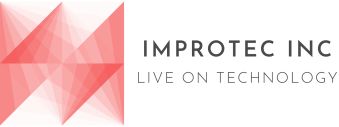The Invisible Lifeline Under Threat
Imagine a complex, global symphony of production, logistics, and delivery, all orchestrated by an invisible lifeline: data. From raw materials tracking to final customer delivery, every single movement, every decision, every transaction in a modern supply chain is underpinned by a massive, intricate web of information. But what happens when this lifeline is vulnerable? In an age where data breaches are not just headlines but catastrophic realities, the integrity and security of your supply chain data are paramount. While front-end applications dazzle with their user-friendliness, the true guardians of this invaluable information reside behind the scenes, within the robust, often-unseen layers of backend system architecture. This article will delve into the critical, multifaceted role of backend architecture in defending your supply chain’s most precious asset – its data – from an increasingly sophisticated landscape of threats.
The Evolving Threat Landscape: Why Data Protection is Non-Negotiable
The supply chain, by its very nature, is a vast, interconnected ecosystem involving numerous partners, diverse geographical locations, and a multitude of technologies. This inherent complexity, while enabling global trade, also presents a fertile ground for cyber vulnerabilities. From sophisticated nation-state attacks to opportunistic ransomware gangs, the threats are diverse and ever-evolving.
- Cyberattacks: Phishing, malware, denial-of-service (DoS) attacks, and zero-day exploits are constant dangers.
- Insider Threats: Malicious or accidental actions by employees or partners can compromise data.
- Data Tampering: Altering data for fraudulent purposes, impacting inventory accuracy or financial records.
- Supply Chain Attacks: Targeting one vulnerable link in the chain to gain access to others.
- Regulatory Compliance: Increasing pressure from regulations like GDPR, CCPA, and industry-specific mandates for data privacy and security.
A single breach can lead to severe financial losses, reputational damage, operational disruptions, and legal repercussions. This makes a proactive, architectural approach to data protection not just a best practice, but an absolute necessity.
Beyond the Firewall: Understanding Backend System Architecture
Before we explore its protective mechanisms, let’s clarify what backend system architecture entails. In essence, it’s the blueprint of the server-side infrastructure that powers your supply chain applications. This includes:
- Databases: Where all your crucial supply chain data (inventory levels, order details, supplier information, shipping logs, customer data) is stored.
- Application Servers: Where the business logic resides, processing requests and interacting with databases.
- APIs (Application Programming Interfaces): The communication bridges between different systems and modules within the supply chain, as well as external partners.
- Message Queues: Facilitating asynchronous communication and ensuring reliable data transfer between disparate systems.
- Cloud Infrastructure: Leveraging services like AWS, Azure, or Google Cloud for scalability, resilience, and often, inherent security features.
- Security Modules: Dedicated components for authentication, authorization, encryption, and intrusion detection.
The strength of your supply chain data protection hinges on how these components are designed, integrated, and secured.
Key Architectural Pillars for Robust Data Protection
A well-designed backend architecture for supply chain data protection is built upon several critical pillars:
-
Data Segregation and Access Control (Least Privilege Principle):
One of the foundational principles of security is the “least privilege” model. This means users, applications, and even system components should only have access to the data they absolutely need to perform their designated functions. Backend architecture facilitates this through:
- Database Segmentation: Separating sensitive data (e.g., financial records, personally identifiable information – PII) into distinct databases or schemas with tighter access controls.
- Role-Based Access Control (RBAC): Defining granular permissions based on user roles (e.g., warehouse manager, logistics coordinator, finance analyst). The backend enforces these permissions at the data layer.
- API Gateway Management: Controlling access to APIs based on user roles and application types, ensuring only authorized systems can interact with specific data endpoints.
- Microservices Architecture: Breaking down monolithic applications into smaller, independent services. Each service can manage its own data and security, limiting the blast radius of a potential breach. If one microservice is compromised, the others remain isolated.
-
Robust Encryption Strategies: Data in Motion and at Rest:
Encryption is the bedrock of data confidentiality. Backend architecture must implement comprehensive encryption across the entire data lifecycle:
- Encryption at Rest: All sensitive data stored in databases, data lakes, and backup systems must be encrypted. This typically involves techniques like Transparent Data Encryption (TDE) for databases and full disk encryption.
- Encryption in Transit (Data in Motion): Communication between different backend components, internal systems, and external partners must be encrypted using protocols like TLS/SSL (for HTTPS), IPSec VPNs, or secure message queues. This prevents eavesdropping and man-in-the-middle attacks.
- Homomorphic Encryption (Emerging Trend): While still maturing, this advanced encryption technique allows computation on encrypted data without decrypting it, offering a revolutionary approach to privacy-preserving analytics in multi-party supply chains.

-
Secure API Design and Management:
APIs are the arteries of data flow in a modern supply chain. Securing them is paramount. Backend architecture considerations include:
- Authentication and Authorization: Implementing strong authentication mechanisms (e.g., OAuth 2.0, API keys, JWT tokens) and granular authorization checks for every API request.
- Input Validation and Sanitization: Preventing common vulnerabilities like SQL injection and cross-site scripting (XSS) by rigorously validating and sanitizing all incoming data through APIs.
- Rate Limiting and Throttling: Protecting against denial-of-service (DoS) attacks and brute-force attempts by limiting the number of API requests from a single source.
- API Gateways: Acting as a central enforcement point for security policies, routing, and traffic management, providing an additional layer of defense.
-
Comprehensive Auditing and Logging:
Visibility is crucial for detecting and responding to security incidents. Backend systems must be designed for comprehensive logging and auditing:
- Detailed Event Logging: Recording all significant events, including data access attempts, modifications, system errors, and security alerts.
- Centralized Log Management: Aggregating logs from all backend components into a centralized system (e.g., SIEM – Security Information and Event Management) for real-time monitoring and analysis.
- Immutable Logs: Ensuring that logs cannot be tampered with, providing a reliable audit trail for forensic investigations.
- Anomaly Detection: Utilizing machine learning and AI algorithms to identify unusual patterns in logs that could indicate a security breach.
-
Data Redundancy and Disaster Recovery:
While not strictly a “data protection” mechanism in the sense of preventing breaches, redundancy and disaster recovery are vital for data resilience and business continuity in the face of system failures or attacks that corrupt data.
- Database Replication: Maintaining multiple copies of databases in different geographical locations to ensure data availability even if one data center goes offline.
- Automated Backups: Regular, secure backups of all critical data, stored off-site and tested periodically for restorability.
- Disaster Recovery Plans (DRP): Clearly defined procedures for restoring operations and data in the event of a major disruption. Backend architecture supports the rapid failover and recovery outlined in these plans.
-
Supply Chain Specific Considerations: Trust and Collaboration
The unique multi-party nature of supply chains introduces additional complexities. Backend architecture plays a role in fostering secure collaboration:
- Blockchain Technology: While not a standalone solution, blockchain can offer enhanced data integrity and transparency for specific use cases in the supply chain. Its distributed, immutable ledger can provide a verifiable record of transactions and product provenance.
- Secure Data Exchange Platforms: Utilizing secure, encrypted platforms for sharing data with partners, ensuring data confidentiality and integrity during inter-company communication.
- Trust Frameworks: Backend systems can support the implementation of digital certificates and trusted identities to verify the authenticity of partners and their data submissions.
The Benefits of a Secure Backend Architecture
Investing in a robust backend architecture for supply chain data protection yields significant returns:
- Enhanced Data Integrity: Ensuring the accuracy and reliability of your supply chain data.
- Reduced Risk of Breaches: Proactive defense against cyber threats and insider risks.
- Improved Compliance: Meeting stringent regulatory requirements for data privacy and security.
- Maintained Business Continuity: Rapid recovery from disruptions, minimizing operational downtime.
- Strengthened Partner Trust: Demonstrating a commitment to data security builds confidence with your supply chain collaborators.
- Competitive Advantage: A secure and resilient supply chain can be a key differentiator in the market.
Read Also: How to Optimize SAP Processes with the Right Applications
FAQs: Your Questions on Supply Chain Data Protection Answered
Q1: What’s the biggest threat to supply chain data?
A1: While external cyberattacks are prominent, insider threats (both malicious and accidental) and vulnerabilities in third-party integrations also pose significant risks due to the interconnected nature of supply chains. Ransomware and data tampering are also escalating concerns.
Q2: How does cloud computing impact backend security for supply chains?
A2: Cloud providers offer robust security features (e.g., encryption, access controls, network security). However, organizations are responsible for configuring these features correctly and managing their data securely within the cloud environment (the “shared responsibility model”). It can enhance scalability and resilience, but requires careful architecture.
Q3: Is blockchain a magic bullet for supply chain data security?
A3: Not entirely. While blockchain offers immutability and transparency, making it valuable for tracking provenance and verifying transactions, it doesn’t solve all security problems. It needs to be integrated into a broader, secure backend architecture and is best suited for specific use cases where trust and verifiability are paramount.
Q4: What are the key considerations when choosing a backend technology stack for data protection?
A4: Look for technologies with strong security track records, built-in encryption capabilities, robust access control mechanisms, and good community support for security updates. Consider the specific data volumes, velocity, and variety your supply chain generates. Performance, scalability, and ease of integration with existing systems are also crucial.
Q5: How can small and medium-sized businesses (SMBs) secure their supply chain data without a huge budget?
A5: SMBs can leverage cloud-based solutions with inherent security features, focus on strong access controls, implement regular backups, use multi-factor authentication (MFA), and educate employees on cybersecurity best practices. Prioritizing essential security measures and seeking expert advice on scalable solutions is key.
Conclusion: Building a Resilient Future, One Architectural Layer at a Time
In the increasingly volatile landscape of global commerce, the supply chain is no longer just about moving goods; it’s about the secure, efficient flow of information. The backend system architecture, though often operating in the shadows, is the unsung hero, the silent guardian of this vital data. By strategically designing and implementing robust security measures – from granular access controls and pervasive encryption to comprehensive logging and disaster recovery plans – organizations can build a resilient, trustworthy, and future-proof supply chain.
Don’t wait for a breach to highlight your vulnerabilities. Invest in the architectural foundations that will protect your data, your operations, and your reputation. The future of your supply chain depends on it.
Call to Action: Ready to fortify your supply chain’s data defenses? Contact us today for a comprehensive backend architecture assessment and discover how a robust security framework can protect your most valuable assets and ensure seamless operations in an ever-evolving digital world.




Leave a Reply